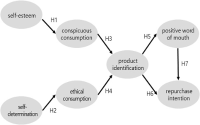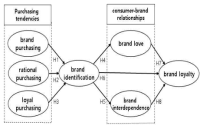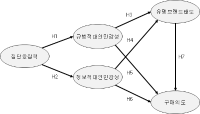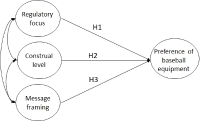PURPOSE This study aimed to present the measures necessary to perform well in tennis clubs by examining the adaptation process of the MZ generation participating in tennis clubs. METHODS A qualitative case study was performed and data was collected through in-depth interviews, direct observations, and literature surveys. The data were analyzed by applying pattern matching among the analysis methods proposed by Yin (2014), and the reliability and validity of the study were demonstrated by consultations between colleagues, reviewing members, and comparing and analyzing previous studies. The study participants were seven MZ generation tennis club participants selected through snowball sampling (one of the non-probability samples). RESULTS Achieving a level of skill that allows for compatibility and the effort required for it, the acceptance of differences in club culture and between generations, having the etiquette necessary for Generation MZ, and falling for the charm of tennis itself were identified as factors for successful participation in tennis clubs. CONCLUSIONS This study is expected to help the MZ generation, who have recently been interested in tennis, continue their participation, as well as lay a small foundation for the expansion of the base of the sport by detailing the measures necessary to successfully participate in tennis clubs.

This study was aimed at empirically analyzing the impact of conspicuous consumption of MTB club members and influence of the reference group on club identification, MTB attitude, and relation continuity intention through structural equation modeling. To accomplish the objective, 250 adult men and women who were involved in MTB clubs in Seoul, Gyeonggi, and Chungcheong areas were surveyed. As for sampling method, self-administered questionnaires were sent out through the mail, which were collected through visits. To verify the proposed structural model, SPSS WIN Ver. 21.0 and AMOS 18.0 were used. It led to the following results. First, conspicuous consumption didn't have a positive impact on club identification. Second, conspicuous consumption had a negative impact on MTB attitude. Third, the influence of reference group had a positive impact on club identification. Fourth, the influence of reference group had a positive impact on MTB attitude. Fifth, club identification had a positive impact on relation continuity intention. Sixth, MTB attitude had a positive impact on relation continuity intention.

PURPOSE This study examined the cultural experiences of tennis club members that have changed due to COVID-19, specifically emphasizing the accepted culture within these clubs. METHODS Seven tennis club members, with over five years of experience, active participation in two or more clubs, and a history of active participation, were interviewed using in-depth interviews and a semi-structured questionnaire. RESULTS Firstly, the tennis club members accepted the “no contact” culture that has emerged since COVID-19. Secondly, social distancing made getting together in large groups difficult, and tennis club activities became more limited. This has led to weakening the tennis club community, which is different from what we have seen before. Lastly, the growing interest in non-traditional content has led to an increase in participants enjoying tennis through social media. The information and experiences gained through social media have changed the perception of coaching. CONCLUSIONS The cultures that tennis players have adopted due to COVID-19 are expected to continue in the future. The findings from this study may provide evidence for understanding the changing culture of sports in the future.
PURPOSE This study focuses on the experiences of novice tennis enthusiasts in Korea, aligning with the rising popularity of tennis as a burgeoning cultural phenomenon. METHODS Employing an ethnographic approach, we included eight participants with <5 years of tennis, in addition to three auxiliary participants. RESULTS The primary findings of this study are as follows: First, novice tennis players from the MZ generation actively employ tennis as a means of personal expression, sharing their tennis-related fashion and experiences on SNS. Second, most novice tennis players report a sense of detachment from the traditional club-centric tennis culture, gravitating toward casual court usage, spontaneous activities, and flexible membership structures. F inally, despite their modest technical proficiency, they avidly engage in knowledge-based consumption, displaying a profound grasp of tennis-related information. CONCLUSIONS These findings provide valuable insights into comprehending this burgeoning cultural phenomenon in Korean society, stemming from the escalating interest in tennis, and can serve as a valuable benchmark for establishing development strategies for tennis.

Purpose The purpose of this study was to empirically analyze the relationship between a sports-for-all club members self-esteem and self-determination, conspicuous consumption, ethical consumption, product identification, positive word of mouth & repurchase intention through structural equation model analysis. Methods For this purpose, this study set 279 members at the nine sports-for-all club located in national capital region as the research subjects. In an effort to verify the proposed structural model, this study used SPSSWIN Ver. 23.0 and AMOS 18.0. Results First, self-esteem had a positive effect on conspicuous consumption. Second, self-determination had a positive effect on ethical consumption. Third, conspicuous consumption had a positive effect on product identification. Fourth, ethical consumption had a positive effect on product identification. Fifth, product identification had a positive effect on positive word of mouth. Sixth, product identification didn’t had a positive effect on repurchase intention. Seventh, positive word of mouth had a positive effect on repurchase intention.


Purpose The purpose of this study was to analyze the relationships among sport-products self-congruence, product love, product trust, and purchase behavior of sports-for-all club members through structural equation model analysis. Methods A survey was conducted targetting 227, men & women in their twenties who are members of MTB, Tennis, Badminton, Golf in at the 8 in Seoul metropolitan area. For sampling method, convenience sampling method was used, while the questionnaire was self-administered. In an effort to verify the proposed structural model, this study used IBM SPSSWIN Ver. 21.0 and AMOS 18.0. Results First, actual self-congruence has positive influence on the product love. Second, ideal self-congruence didn't have positive influence on the product love. Third, social self-congruence has positive influence on the product love. Fourth, product love has positive influence on the product trust. Fifth, product trust has positive influence on the positive word-of-mouth. Sixth, product trust has positive influence on the repurchase intention. Seventh, product trust has positive influence on the attitudinal loyalty.



The purpose of this study was to investigate the relationships among purchasing tendencies, brand identification, consumer-brand relationships, and brand loyalty by analyzing structural equation model. A survey was conducted by using members(n=220) of 8 sport clubs located in Chungcheong Province. The data were recorded and analyzed using the SPSSWIN Ver. 21.0 and AMOS 18.0 to analyze the structural equation model. The findings of this study were as follows: First, brand purchasing had a significantly negative effect on brand identification. Second, rational purchasing was found to impact significantly on brand identification. Third, loyal purchasing did not show significant impact on brand identification. Firth, brand identification was found to significantly influence on brand love, brand interdependence, and brand loyalty. Fifth, brand love had no positive impact on brand loyalty. Finally, interdependence was found to impact significantly and positively on brand loyalty.


The objective of the current study is to empirically reveal the impact of self-recognized group cohesiveness and interpersonal susceptibility (normative interpersonal susceptibility and informative interpersonal susceptibility) on mountain bikers’ attitude toward name brand and purchase intents using structural equation model. In order to achieve this goal, the researchers surveyed 217 mountain bikers in six mountain bikers’ clubs in Chungcheong-do province area in South Korea. In order to validate the proposed structural model, SPSSWIN version 21.0 and AMOS 18.0 were utilized. The results showed that first, group cohesiveness had a positive influence on the bikers’ normative and informative interpersonal susceptibility. Second, normative and informative interpersonal susceptibility positively influenced attitude toward name brand. Third, normative interpersonal susceptibility did not positively influence the purchase intent, but informative interpersonal susceptibility did. Fourth, attitude toward name brand positively influenced the purchase intent.


Purpose The purpose of this study was to analyze the propensity to consume the consumer of the baseball equipments who have difference of the product preference by regulatory focus, and who have construal level and suitable message framing. Methods Populations are consumers who have purchased the baseball equipments before, and the sampling groups, five different society baseball group’ league from Seoul and Kyeongi-do, were distributed, 318 copies, by convenience sampling. The questionnaire proceeded by three-way completely randomized design with stimulated sentences of four different advertisement compartmentalized by the regulatory focus, construal level and message framing. The analysis utilized SPSS 21.0 to perform the frequency analysis, manipulation check, independent t-test, two-way ANOVA, and Scheffe was used to post-hoc. Therefore, the result of this study is as below. Results First, after analyzing the distinction of the regulatory focus of the consumers of baseball equipments, the preference of the consumer who has improving focus was higher than that of consumer who has the prevention focus. Second, preference differentiation analyzed by construal level and the message framing of the consumer of the improving focus, the preference was higher when the message framing was positive, and the construal level was in short time. Third, preference differentiation analyzed by construal level and the message framing of the consumer of the prevetnion focus, there was no difference of the preference of the equipments followed by the construal level and message frame for prevention focus consumers.


Purpose The purpose of this study is to grasp consumers' perception of badminton racket brand image using MDS and ISA. Methods To do this, we conducted questionnaires on those who participated in badminton and had experience of participating for 6 months or more in Seoul and Gyeonggi province from April 12 to 28, 2017, selected and analyzed a total of 313 copies as valid samples of this study. Results The results of study are as follows. First, as a result of MDS analysis, it showed that only the price of brand image attributes were in order of Trion > Joobong > Lining > Victor > Yonex, and the other attributes(Design, Functionality, Quality, Awareness, Advertising image, Event, Color, Popularity, Sophistication, Originality, Trust, Service) were in order of Yonex > Victor > Lining > Joobong > Trion. Second, as a result of ISA analysis, in I quadrant, Yonex showed functionality, quality, sophistication, and trust and Trion showed price, design, functionality and quality, Victor showed price, design, functionality, quality, color, sophistication, trust, service, and Joobong showed price, functionality, quality, and trust in this area. In quadrant Ⅱ as concentrated area, Yonex showed price and service, Trion showed color, trust, service, Victor showed price, Lining showed trust and service, and Joobong showed service in this area. In quadrant Ⅲ as low rank, Yonex showed advertising image, event, Trion showed awareness, advertising image, event, popularity, sophistication, originality, Victor showed advertising image, event, popularity, originality, Lining showed awareness, advertising image, event, popularity, originality, and Joobong showed design, advertising image, color, popularity, sophistication in this area. In quadrant IV as excess avoidance, Yonex showed design, awareness, color, popularity, originality, Victor showed awareness, Joobong showed awareness, event, originality in this area.







